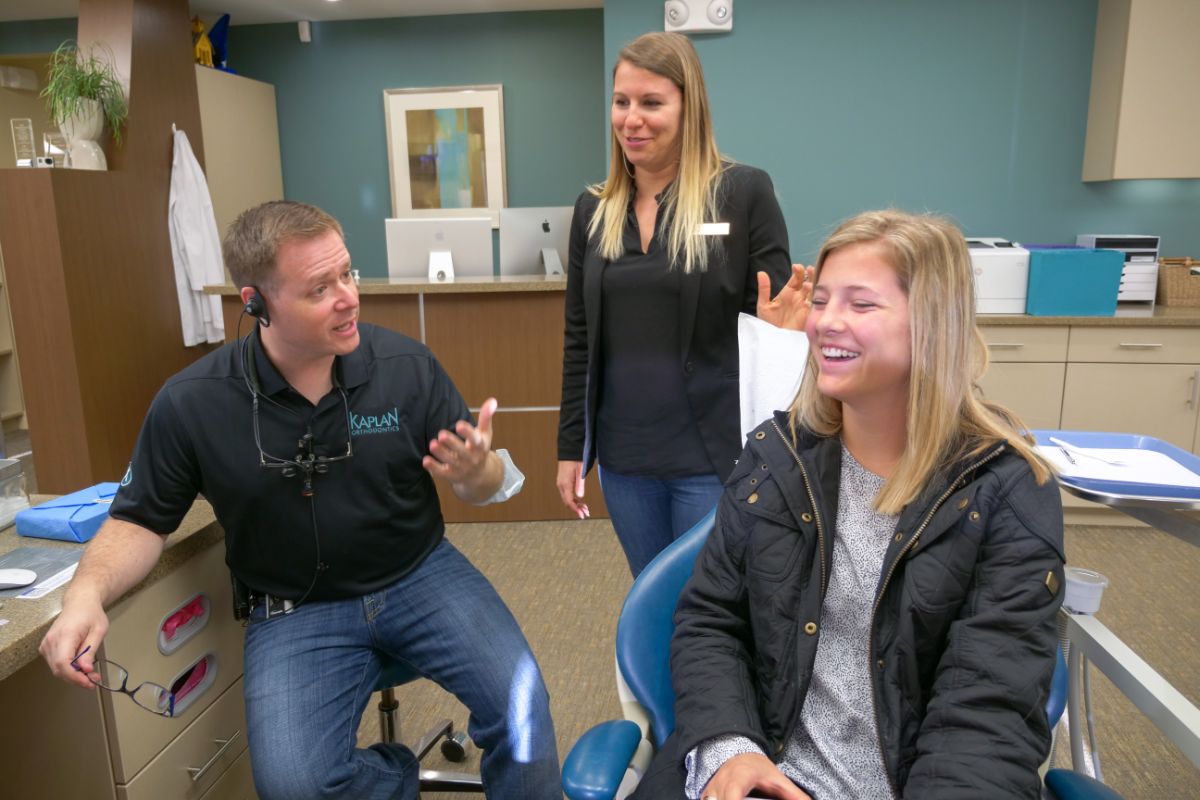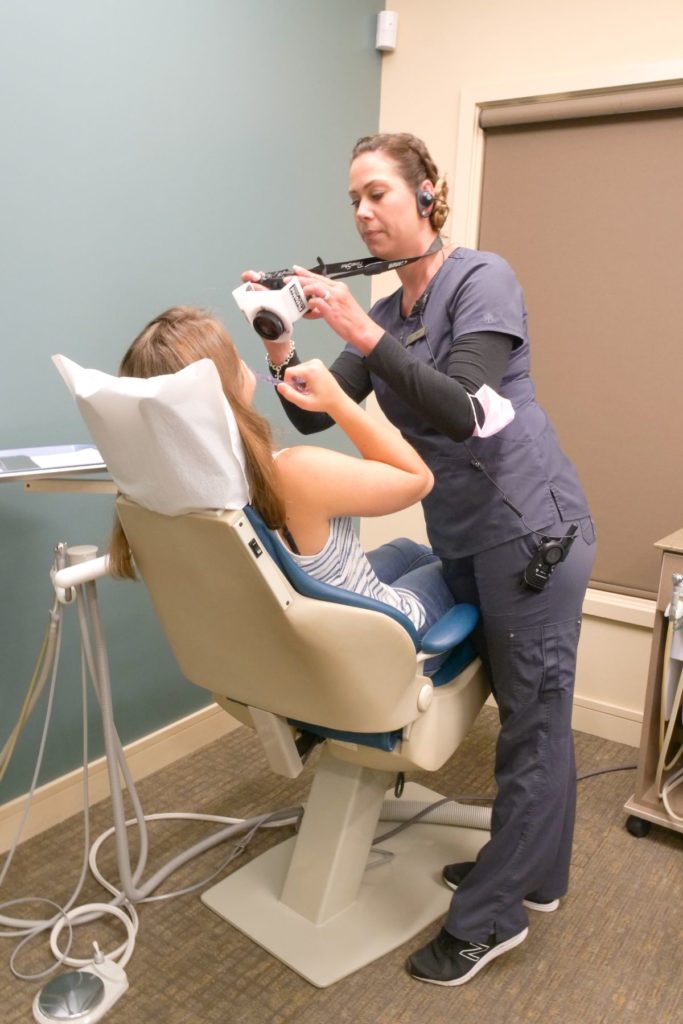
The 5 Best Foods For Braces
t’s exciting when you make the choice to improve your smile with braces from Kaplan Orthodontics. After all, you’re making an important investment in your oral health, and that’s something to celebrate! Like any new adventure, however, braces can come with quite a few changes. Some of them are minor, but others will require some time to get used to.
For example, your smile will look different in the mirror, and your mouth might feel slightly unfamiliar at first, too. That’s because your teeth won’t be touching in the same way anymore, which can change the way you chew. It can even affect the way you speak temporarily, especially in the beginning. But don’t worry! This is normal and expected, and most importantly, it won’t last forever.
As your teeth begin shifting in response to treatment, your mouth will continue to adapt, as chewing and biting start to feel more natural again. Within a month or so of getting your braces put on, you should be able to eat most orthodontist-approved foods. However, there will still be certain food restrictions that will continue throughout your orthodontic journey. While all your hard work will pay off once your braces are removed and your new smile revealed, we understand how frustrating these restrictions can be sometimes.
At Kaplan Orthodontics, we want the time you spend in braces to be as comfortable and stress-free as possible! To help you cope with some of the challenges that come with orthodontic treatment, we’ve put together a few tips and a list of some of the best foods for braces patients. Keep reading below to learn more!
Hang in there!
Whether you’re in braces for a few months or a few years, it can feel like the process will never end, but don’t worry – they really will come off eventually. When you consider that the benefits last a lifetime, braces are a relatively brief time commitment, but patience is a big part of that. Things will be easier if you can accept from the beginning that you’ll have a few limitations for a while. You can also help your treatment progress more smoothly by following these recommendations.
Slow down!
We’re all guilty of it from time to time, but try to avoid taking huge bites or scarfing down your food. To protect your braces and promote better digestion, take a little extra time to cut anything you’re eating into bite-sized pieces, and chew each piece slowly and carefully.
Stick to softer foods for a while.
Immediately after your braces are put on, and for a day or two following adjustment appointments, your mouth may feel tender. Soft foods will put less pressure on any sore spots, so pull out your favorite recipes for soup, smoothies, mashed potatoes, and rice! While you’ll eventually be able to add things like steak and burgers back to the menu, taking it easy for a few days will help protect your mouth and braces.
Leave nuts and seeds for the squirrels.
They may be good for you, but nuts and seeds need to stay off the menu while you’re wearing braces. They can get stuck in your brackets easily, which could end up bending or breaking them. The same goes for any sticky or crunchy foods, too. To get the most out of your braces, do your best to protect them by avoiding foods that can cause damage.
Don’t be afraid to treat yourself!
Braces treatment can be hard work, and sometimes you might want a little pick-me-up to end the day. Frozen yogurt, popsicles, and ice cream can be a great way to indulge yourself while also giving your mouth some relief if it’s feeling sore. Just remember to brush your teeth thoroughly as soon as you’re done to keep them clean and healthy.
5 braces-safe foods that are good for you, too
Good oral health goes beyond simple brushing and flossing. To give your teeth and gums the best care when you’re in braces, aim to drink eight glasses of water daily and eat a healthy diet that’s rich in vitamins and minerals. There are lots of foods out there that are safe for braces and good for your teeth, too. We’ve rounded up a few of our favorite below!
Smoothies
Smoothies are a bit of a staple among braces patients. Both the temperature and texture can help soothe oral discomfort by decreasing swelling and creating a numbing sensation in your gums and teeth. With so many fruits and vegetables to choose from, the combinations are practically endless, and they’re fun to make and take with you on the go! Serve one in a glass on its own or in a bowl with healthy toppings like fruit and honey for an extra boost of vitamins and minerals.
Yogurt
With a texture that’s similar to smoothies, yogurt is a good choice for snacking when your mouth is feeling sore. Whether you like it plain or Greek, yogurt is high in calcium and protein to help strengthen your teeth. It can also be good for your gums thanks to the extra boost of beneficial bacteria you get from the probiotics it contains. These help to crowd out the bad bacteria that can lead to cavities. Speaking of cavities, even plain yogurt has naturally-occurring sugars, so be sure to brush your teeth after you eat any.
Fish
Some days you won’t want to put any pressure on your teeth at all, and even small pieces of food can cause pain. Fish can be a great way to get healthy fats in a soft and flaky package. The omega-3 fatty acids that are found in fish have also been linked with lower rates of gum disease because they naturally decrease inflammation, and fatty fish like salmon and Atlantic mackerel are good sources of vitamin D. This helps your body absorb and use calcium effectively, which is important for oral health since it protects the teeth and gums from disease.
Eggs
Eggs are a super versatile food that can be eaten scrambled, boiled, or poached at breakfast, lunch, or dinner – or any time, really! No matter how you prefer them, they’ll generally be soft enough to eat even when your mouth is feeling tender. Eggs are also an excellent protein source, and rich in phosphorus, which helps to build strong bones and teeth when combined with calcium and Vitamin D. The protein contributes to keeping your teeth healthy, and reducing decay.
Fruits and veggies
When you have new braces, it’s best to avoid certain types of raw fruits and vegetables like carrots, apples, and celery. You’ll need to be careful with them throughout treatment since their crunch can be hard on your brackets and wires, but baking, boiling, or roasting them makes them soft enough to eat safely. Most salads are fine to consume even with braces, just steer clear of the croutons! Fruits and veggies contain lots of goodness, including vitamin C, which helps protect gums and other tissues from cell damage and bacterial infections.
Count on Kaplan Orthodontics to find your best smile with braces
As orthodontic specialists, we’ve been around long enough to know that braces can be tricky sometimes, especially when it comes to food. But you don’t need to suffer to get straighter teeth! Our talented team is dedicated to providing you with the most comfortable treatment options and nothing but the highest quality orthodontic care. We hope this guide will help you make good choices for your teeth and body!
If you’re a current braces patient and have any questions or concerns about your treatment plan, Kaplan Orthodontics is always here to help. If you’ve been thinking about improving your smile with braces or are in need of orthodontic care in the Dunwoody area, get in touch with our office today and we’ll be happy to schedule a FREE consultation for you!



